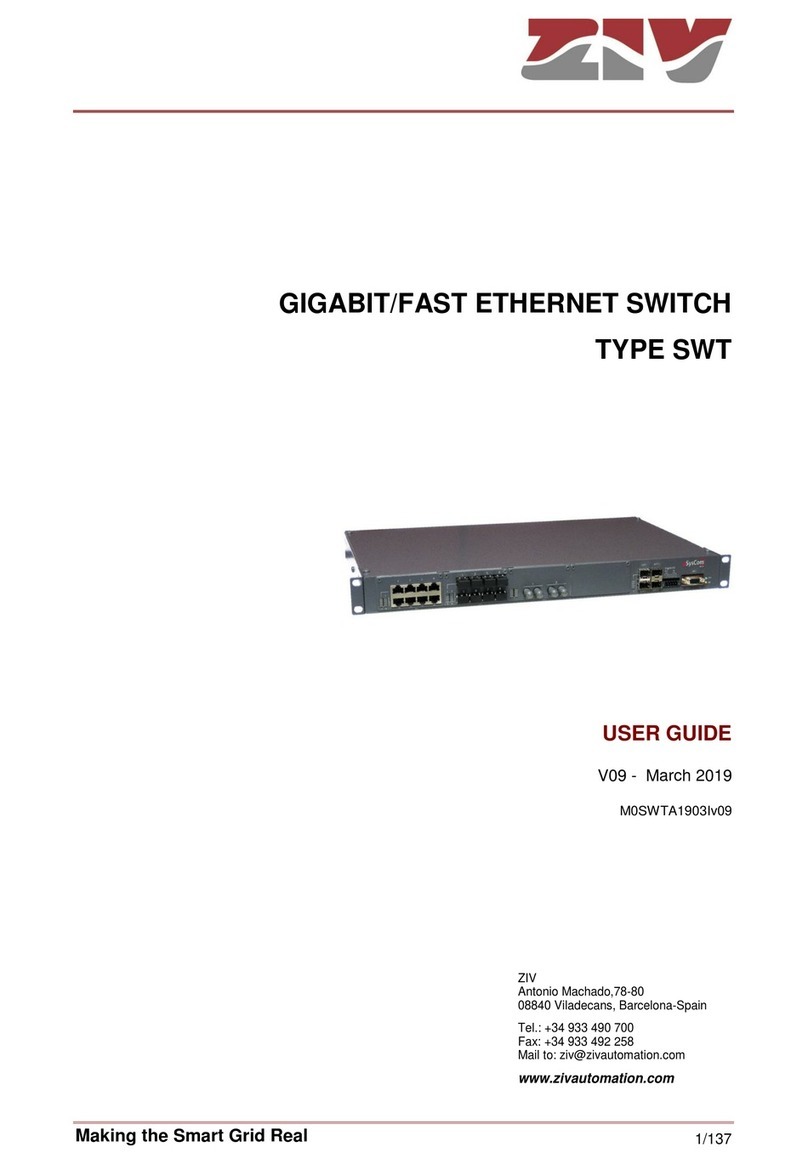SW3-L3
GIGABIT/FAST ETHERNET SWITCH/ROUTER TYPE SW3-L3 10/180
USER GUIDE - M0SW3M1902Iv07 - V06 February 2019
❖Advanced RSTP implementation.
The SW3-L3 not only complies with the STP and RSTP protocols for resolving loops in
the network and operation in rings, but it also exceeds the recovery times obtained
through said protocols. Thus, the SW3-L3 guarantees recovery times lower than 4 ms per
link via the RSTP standard in case of failure.
❖Critical services and security.
The different services have their level of importance. For example, sending orders to
open a switch has priority over the traffic from a telephone connection. The SW3-L3 has
Quality of Service (QoS), which identifies critical services, guaranteeing that all traffic
receives the appropriate priority.
On the other hand, the SW3-L3 implements different security features that prevent
unauthorized access to the traffic system, such as: port disabling, traffic restriction
according to MAC addresses, authentication protocols (TACACS+, RADIUS), etc.
❖Broadcast traffic limitation.
In order to avoid the network flooding, the SW3-L3 selects maximum volume limits for
different combinations of broadcast, multicast, and flooding messages, in each one of
their ports.
❖Multicast traffic.
The SW3-L3 has two protocols for adapting the multicast traffic to the desired interfaces.
The protocols are:
oGARP/GMRP (IEEE 802.1D 2004). The GMRP clients request to the SW3-L3
the selective transmission of the multicast traffic desired by each of them.
oIGMP. The SW3-L3 manages multicast traffic based on the IGMP messages
exchanged by the client devices and the multicast routers (IGMP Snooping). To
be operative, the GARP/GMRP protocol must be INACTIVE.
The SW3-L3 also selects the multicast flows in an explicit and manual way (static
configuration).
❖Port mirroring.
The SW3-L3 resends traffic copies of one or more ports to another one, the monitoring
port, being able to select incoming or outgoing traffic copies in each monitored port in an
independent manner.





























